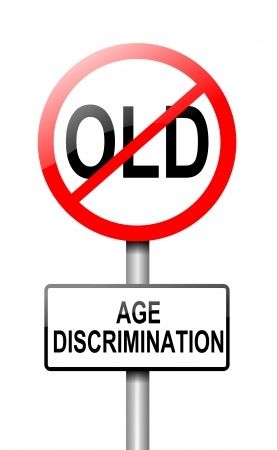By Rose O. Sherman, EdD, RN, FAAN
One of my former graduate students who is rapidly approaching her 60th birthday posed an interesting question to me the other day. Is there ageism in nursing? She had recently left a position after a number of years and was seeking employment. Things seemed different to her during this job search. Even with the economic downturn, she had not anticipated having problems finding a leadership role because she had a strong background. “I have a sense, she told me, that my age is a turnoff to organizations.” She is not the first colleague who has raised this issue with me. Ageism is a topic that is not often discussed in nursing. As a profession, we have a workforce that is older than that of most professions. Many nurses are successfully working into their late 70s and even 80s. Yet despite these facts, I recently learned when editing the October issue on the aging nursing workforce for the Journal of Nursing Management that healthcare organizations have been slow to embrace a need for workplace accommodation for older nurses.
Ageism Defined
Ageism or the discrimination and/or stereotyping based upon one’s age is least most frequently discussed forms of prejudice in the workplace. We hear more often about sexism or racism. The recent economic downturn in the economy has led widespread reports of the difficulty that employees over the age of 50 confront when seeking new employment. This is a relatively new trend over the past decade.
Some researchers believe that ageism is partially driven by the rise of a need for strong technological skills and a sometimes misplaced belief that older workers cannot adopt new technologies as quickly as younger co-workers. This is a the first time in history notes Don Tapscott in his work Grown Up Digital, that a younger generation is generally more competent with a key life skill than their parents.
There are laws to prevent age discrimination. The Age Discrimination in Employment Act (amended in 1986) says that it’s illegal for an employer to discriminate against you if you are over 40 (no upper cap on age). The law applies to employers with at least 20 employees (or is a government of any size).
Signs of Ageism
Ageism in an environment can be subtle or overt but here are some key signs in healthcare:
- Stereotyping all older staff in a certain way such as having poorer technological skills or being slower to respond.
- Holding a physical impairment against an older worker such as a failure to accommodate age-related disabilities or sticking to a one size fits all scheduling option.
- Failure to promote older staff often accompanied by the remarks “they will be retiring soon”.
- Labeling all older staff as being “rigid” or “set in their ways”.
- Consistently asking older staff about their “retirement plans”.
- Excluding older staff from outside unit or department social events.
Stereotypes of Older Nurses
What contributes to ageism are stereotypes that are often not evidence-based. Some commonly held ones in nursing include the following:
- Older nurses cost their organizations more in benefits because they have more illnesses and use more sick time.
- Older nurses are unable to fully meet staff nursing job requirements especially the lifting requirements.
- Older nurses are less flexible and more change resistant.
- Older nurses are slower in their work than their younger peers.
- Older nurses are unable to learn new technology on their units.
- Older nurses are less engaged in their work than their younger colleagues.
So is there ageism in nursing? There appears to be a growing consensus that it does exist according to Dr. Susan Letvak and Dr. Sarah Kagan, both experts in this area. They both point out that a long standing problem in the care of geriatric patients – paternalism and ageism has now translated into a professional issue. It may be a more serious problem in acute care settings versus hospice, long-tem care or home care programs. What we do know from evidence-based workplace research is that the healthiest and most innovative teams are diverse. This diversity should include age diversity. Nurse leaders need to assess their own assumptions and attitudes as they work with their older staff to insure that they are being supportive and are not discriminating on the basis of age.
Read to Lead
Kagan, S. (2012). Gotcha! Don’t Let Ageism Sneak into Your Practice. Geriatric nursing, 33, 60-62.
Letvak, S. (2002). Myths and Realities of Ageism in Nursing. AORN, 75(6), 1101-1107.
© emergingrnleader.com 2013



 LinkedIn
LinkedIn Instagram
Instagram